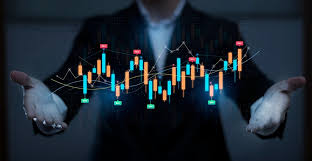
Mastering Forex Trading: Practice Makes Perfect
Forex trading, the act of exchanging one currency for another in the global foreign exchange market, can be both an exhilarating and daunting endeavor. The promise of profit attracts thousands of traders, yet only a fraction master the craft. To navigate this complex arena, forex trading practice Qatar Brokers can play a crucial role in facilitating your trading journey. In this article, we will explore essential practices for forex trading and how you can apply them to increase your chances of success.
Understanding the Basics of Forex Trading
Before diving into the complexities of forex trading, it’s essential to grasp the fundamental concepts that govern the market. Foreign exchange trading involves currency pairs, where one currency is exchanged for another. The value of each currency is indicated through a bid/ask spread, where traders can buy (ask) or sell (bid) currencies.
Key concepts to familiarize yourself with include:
- Currency Pairs: Major pairs like EUR/USD or GBP/USD are the most traded, while minor pairs and exotic pairs can offer different opportunities and risks.
- Pips: The smallest price move in a currency pair, usually the fourth decimal place.
- Leverage: A tool that allows you to open larger positions with a smaller capital, amplifying both potential profits and risks.
- Margin: The required deposit to open leverage positions, which is crucial for maintaining a trading account.
The Importance of Practice in Forex Trading
Just as a musician perfects their craft through consistent practice, a forex trader must develop their skills over time. The forex market is highly dynamic, with numerous factors influencing currency values. While theoretical knowledge is crucial, practical application takes precedence.
To practice effectively, traders can utilize various methods:
1. Demo Accounts
Most brokers offer demo accounts that simulate real trading conditions without the risk of losing actual money. This is an ideal way for new traders to familiarize themselves with the trading platforms and instruments available. It allows the practice of various strategies and techniques in a risk-free environment.
2. Trading Simulators
Trading simulators provide a platform where traders can practice their strategies with real-time data. These tools analyze past performance and help refine trading strategies by allowing for repeated scenario testing without financial implications.
Developing a Trading Strategy
A well-defined trading strategy is the backbone of successful forex trading. It encompasses entry and exit criteria, risk management protocols, and trade management techniques. Here are the fundamental elements to consider when formulating your strategy:

1. Technical Analysis
Technical analysis involves studying price charts and employing indicators to identify trading opportunities. Traders use tools such as moving averages, RSI (Relative Strength Index), and Fibonacci retracement levels to predict price movements and identify trends.
2. Fundamental Analysis
Fundamental analysis focuses on the economic factors that affect currency values, such as interest rates, inflation data, and geopolitical events. By staying informed about global economic indicators and news, traders can make educated decisions about potential market movements.
Risk Management: A Trader’s Safety Net
Alongside strategy, risk management is a vital integral part of forex trading. Effectively managing risk helps protect your capital and ensures your trading longevity. Here are some practices to implement:
1. Setting Stop-Loss Orders
A stop-loss order automatically closes a position when the price reaches a specified level. This tool serves to limit potential losses in volatile markets.
2. Defining Position Sizes
Proper position sizing ensures that no single trade can substantially impact your trading account. Many traders risk a small percentage of their capital (typically 1-2%) on any given trade, preserving their overall account for future opportunities.
Monitoring and Reviewing Performance
A crucial yet often overlooked practice in forex trading is the regular assessment of performance. Keep a trading journal to track trades, strategies, outcomes, and lessons learned. This documentation provides vital insights into what works and what doesn’t, allowing you to refine your approach over time.
The Role of Continuous Learning
The forex market is constantly evolving, and successful traders prioritize continuous learning. This can stem from staying updated with market news, attending webinars, reading books, or joining trading communities. Engaging with fellow traders can provide valuable perspectives, new strategies, and the motivation to improve.
Conclusion
Forex trading practice is an ongoing journey that requires dedication, analytical skills, and a clear strategy. By utilizing demo accounts, refining one’s trading strategy, implementing strong risk management, and committing to continuous learning, traders can cultivate their skills and increase their likelihood of success in the forex market. Remember that the key to effective trading lies in consistency, patience, and an unwavering commitment to improving your craft.
